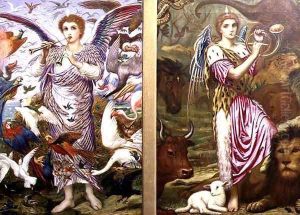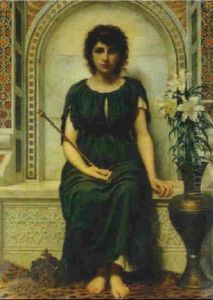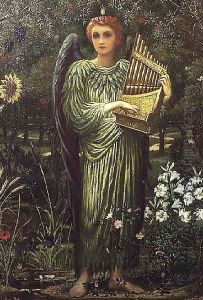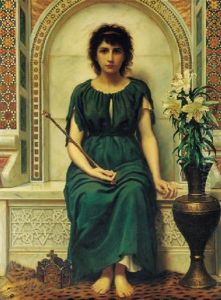Edward A. Fellowes Prynne Paintings
Edward Arthur Fellowes Prynne, born in 1854, was an influential British architect, known for his significant contributions to the Gothic Revival architecture movement in the late 19th and early 20th centuries. Prynne's work is characterized by its detailed craftsmanship, use of traditional materials, and adherence to medieval Gothic architectural principles, albeit with a modern interpretation that made his buildings particularly distinctive in the urban and rural landscapes of England.
Prynne embarked on his architectural career after studying at the prestigious Royal Academy Schools, a foundation that provided him with a solid grounding in the principles of design and architecture. His education was complemented by an apprenticeship under the tutelage of George Edmund Street, a leading figure in Gothic Revival architecture. This mentorship was crucial in shaping Prynne's architectural style and philosophy, embedding in him a deep appreciation for the Gothic aesthetic and an understanding of its application in contemporary architecture.
Throughout his career, Prynne was responsible for the design and construction of several notable buildings, primarily churches, that are celebrated for their artistic and architectural merit. His projects often featured elaborate stone carvings, stained glass, and intricate woodwork, showcasing his skill in integrating decorative arts into architectural designs. Prynne's commitment to creating harmonious, spiritually uplifting spaces was evident in his thoughtful consideration of light, color, and texture, which he believed were essential to enhancing the sacredness of ecclesiastical buildings.
Prynne's architectural legacy extends beyond his individual projects. He was an active member of various professional societies, including the Royal Institute of British Architects (RIBA), contributing to the discourse on architecture through lectures, writings, and participation in architectural competitions. His influence was also felt in his mentorship of younger architects, whom he encouraged to embrace the principles of the Gothic Revival while also pushing the boundaries of contemporary design.
Edward Arthur Fellowes Prynne passed away in 1921, leaving behind a body of work that continues to be appreciated for its aesthetic beauty and architectural integrity. His dedication to the Gothic Revival movement not only enriched the architectural landscape of his time but also contributed to the ongoing appreciation and study of Gothic architecture in the modern era. Through his buildings, writings, and teachings, Prynne's legacy endures, cementing his place as a pivotal figure in the history of British architecture.







